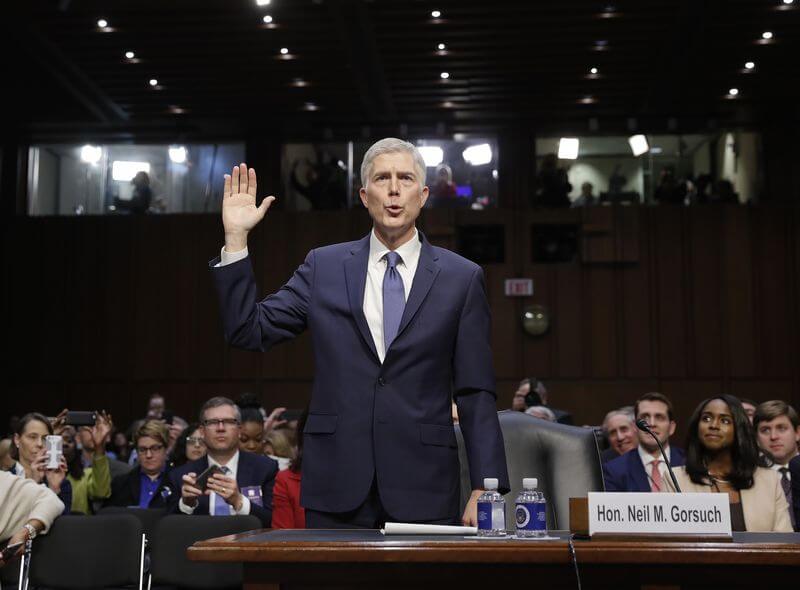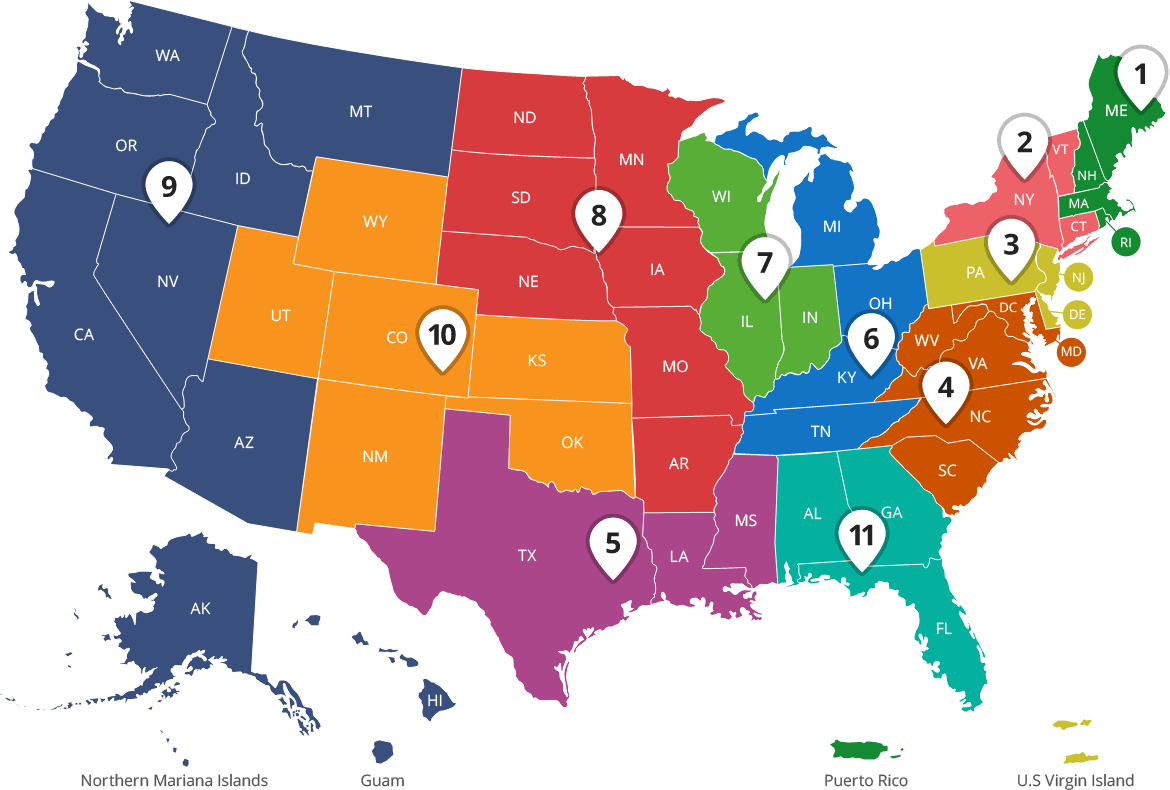
For four days this week, the Senate Judiciary Committee gathered together in the Hart Office Building in Washington DC to voice discussion and pose questions to Supreme Court Justice nominee Judge Neil Gorsuch.
Filling the seat of the late Justice Antonin Scalia on the Supreme Court was a huge motivating factor for voters last November. President Trump chose Judge Gorsuch shortly after taking office in January.
Over the course of the confirmation hearing, the separation of powers doctrine was repeatedly brought up. This is the doctrine by which our government divides power between three branches: the legislative, executive, and judiciary. Ideally, the legislative branch makes the law, the executive branch implements the law, and the judiciary interprets and applies the law when disputes arise.
TWO KINDS OF JUDGES
So why has the judiciary become the center of attention? Largely because a judicial branch asserts the power to strike down actions by the other two branches.
Further, the 20th Century gave rise to “Living Constitution” judicial philosophies that empowered judges to do an end run around the written text of the Constitution and the Bill of Rights.
Many judges have pushed these philosophies to the extreme, creating the practice many call “judicial activism”—the virtual transformation of the federal courts, and especially the Supreme Court, into unelected super-legislatures that often assume the roles of the other branches. These judicial super-legislatures often use the Constitution only as a loose guideline, rather than as a document whose text is to be applied according the provable public meaning of the words actually written, ratified, and codified in its pages.
Thus, controversial issues historically reserved to federal and state legislatures—the “rights” to contraception, pornography, abortion, same-sex marriage—have been “discovered” by judges rummaging through what they see as the loosely defined terminology of the Constitution.
All that has made judicial nominations by the President, and confirmation by the Senate, high-stakes political drama.
Judge Gorsuch has been a proponent of “originalism”—an approach that focuses on the written words of the Constitution and opposes any “judicial activist” attempt to redefine those words to match contemporary fads or fashion. That makes him a threat in the eyes of the activists, a potential restrainer of their ambitions to reinterpret the Constitution according to their ideology.
And that includes the issue of religious liberty. Because “originalism” honors, and seeks to preserve, the written text of the Constitution, Judge Gorsuch’s approach more often favors religious freedom as found in the First Amendment.
SO . . . WHO’S IN CHARGE?
With 124 current judicial vacancies (115 in district and circuit courts) to be filled by President Trump and the Senate, the way these judge seats are filled will in many ways determine the future of the implementation of constitutional law in America. That is to say, they will determine the future of America.
For that reason, friends of religious liberty hope these positions are filled with candidates who adhere to the originalist approach.
With such judges, the people will rule America through their elected representatives and with confidence that the judiciary will respect the text of the Constitution, and not overstep those representatives in a way the Constitution does not warrant. Otherwise, the courts will rule in the fashion of an “oligarchy”—government by the few.
THREE LAYERS OF NATIONAL JUDGES
The United States is a federated system with a national government and semi-autonomous state governments. Regardless of which state one resides in, Americans are under the jurisdiction of two executives: the national president and a state governor. Courts have a similar bifurcation, having federal courts and state courts.
Federal courts deal with federal statutes passed by Congress and signed into law by the President. However, these courts also handle rights and liberties protected by the Constitution. Therefore, if a local or state law violates a person’s constitutional right, that lawsuit may eventually end up in federal court.
These federal courts are organized into three levels: District Courts, Appeals (or “Appellate”) Courts, and the United States Supreme Court. And the vast majority of jurisprudence affecting American lives is not coming from the Supreme Court.

The U.S. District Courts are divided into 94 federal judicial districts, while the U.S. Courts of Appeals are organized into 12 regional circuits (1st, 2nd, 3rd, 4th, 5th, etc.) and one Federal Circuit.
Together they hold immense power to affect the lives of everyday Americans. Appellate Courts can often have more than 15 judges. Generally, three appellate judges sit on a panel to hear a case, but rulings can be appealed to the entire appellate court.
The Supreme Court is established in Article III of the Constitution. Congress establishes the lower courts and has the authority to alter them as it sees fit. These lower courts are important because of how the Supreme Court is allowed to operate.
Parties to legal conflicts in each federal district court level are allowed to appeal to the court of appeals for the district where the case is heard—that is, to petition to the next higher level. Appeals to the U.S. Supreme Court most often come from the courts of appeals. Appeals to the U.S. Supreme Court can also be made from state Supreme Courts if a party to a case believes the state court has violated a federal law.
Yet most Americans are surprised to learn that the Supreme Court hears less than one percent of cases that request to come before it each year.
WHO CHOOSES YOUR JUDGES?
This shows why the lower courts are so important—and why filling the 124 vacancies of those courts will have such an impact on so many lives. The seats are filled by nomination of the President of the United States and judges serve for life. For life!
Where do these nominations come from?
For district court judges, it is common practice for Senators of the President’s party to identify candidates for the President. It is also common practice for the President to consult both Senators of a state, regardless of party, to determine whether they approve of a judge he intends to appoint. Senators also play a role in the selection of appellate court judges.
But once the President has officially nominated a judge, the Senate must confirm the nomination—and thus, the drama of a Senate judicial hearing such as this week’s for Judge Gorsuch. Because right now in American history, the judiciary holds immense power over the lives of ordinary Americans—more power than the Framers ever envisioned for what one of them called the “least dangerous” branch (in Federalist No. 78).
WHAT YOU CAN DO
First Liberty is taking advantage of the openness of the Trump administration to provide detailed analysis on the religious liberty records of many nominees to fill the federal vacancies mentioned above. This includes the U.S. Supreme Court, appellate courts, and district courts. Your partnership with First Liberty gives you personal impact.
Further, First Liberty is providing an easy-to-understand resource for learning more about judicial appointments and judge vacancies through this Interactive Map. Through this page you can also contact your Senators to communicate your preferences for their vote on the confirmation of Judge Gorsuch.
In addition, this map provides all the information you need to know regarding the vacancies in each district and the information you need to contact your Senators regarding nominations for judges of your federal district courts and federal appellate courts.
While most of America has narrowed in on the Gorsuch hearing and confirmation this week, let us not forget that the preserving of constitutional freedom for Americans is also dramatically affected by the many lower court appointments to come.
Stay tuned for more information from First Liberty on the contours of the judicial stage on which the future of your religious freedom will be played out.
News and Commentary is brought to you by First Liberty’s team of writers and legal experts.